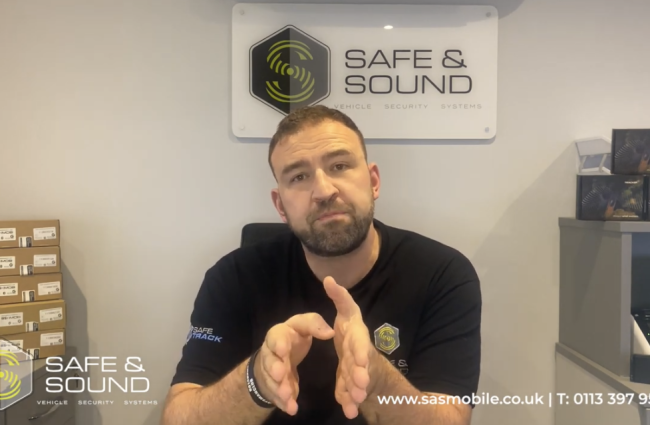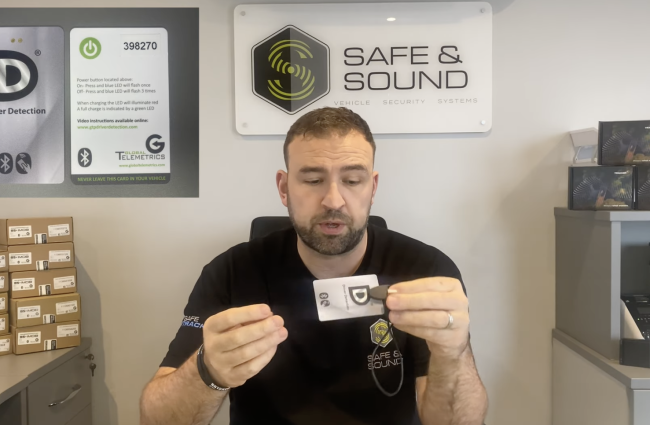Installation Times: Monday - Thursday: 7:30am to 6pm | Friday: 7:30am to 3pm | Saturday & Sunday: Closed
Call us: 0800 368 8656
sales@sasmobile.co.uk
Installation Times: Monday - Thursday: 7:30am to 6pm | Friday: 7:30am to 3pm | Saturday & Sunday: Closed
Call us: 0800 368 8656
sales@sasmobile.co.uk
2nd January 2019

At Safe & Sound, we understand that choosing a Thatcham and insurance-approved car tracking system can be a minefield. You may not know what you want or what your insurance company requires. This article aims to answer all your questions to help you make a more informed decision about your next car tracker.
All Thatcham-approved tracking systems are designed and built to meet their qualifying Thatcham Category criteria before they are approved for installation.
Below we compare vehicle tracking systems as we break down each Thatcham tracker category to help you understand exactly what they mean and how to choose the best tracker for your car.
Category 5 vehicle trackers offer top-tier security and are recognised for their ability to track stolen vehicles. These systems use GPS and GSM technologies for real-time monitoring, and include a remote engine immobiliser, allowing the vehicle to be disabled remotely if stolen. This category is often used for high-value vehicles or fleets that require enhanced protection. These trackers provide real-time tracking, alert notifications for unauthorised movements, and anti-jamming technologies, delivering advanced tracking and theft prevention.
Thatcham Category S5 is the new classification for vehicle trackers previously in Category 5. S5 trackers fall under Thatcham's Category 5, with additional features that meet higher security standards. They are typically installed in high-value vehicles, with many insurance companies offering discounts for vehicles equipped with these trackers. S5 trackers offer real-time tracking, automatic theft alerts, remote immobilisation, and tamper detection, all aimed at safeguarding high-value vehicles with advanced tracking and theft recovery systems.
View our collection of S5 Vehicle Trackers.
Category 6 trackers are designed for high-end vehicles, focusing on vehicle recovery and preventing theft. They use GPS/GSM technology for effective tracking and alerting. While not as advanced as Category 5 trackers, Category 6 systems still provide solid security for valuable vehicles. These trackers provide real-time tracking, vehicle recovery services, and 24/7 monitoring by a control centre, offering dependable security for premium vehicles.
Category 7 trackers are tailored with specific vehicle security in mind, offering a higher level of protection than Category 6. These devices include vehicle movement notifications and proactive theft prevention measures. Category 7 trackers are suitable for both private and commercial vehicles, providing GPS tracking, movement alerts, and proactive security features to enhance vehicle protection with advanced alerts and monitoring.
S7 vehicle trackers are an upgraded version of Category 7 devices, offering more advanced security features for vehicles. They typically come with additional technologies to monitor the vehicle’s security and provide instant alerts if any suspicious activity is detected. S7 trackers offer advanced GPS and GSM tracking, remote immobilisation, 24/7 monitoring, and real-time alerts, providing comprehensive tracking and immediate response in case of vehicle theft or tampering.
View our collection of S7 Vehicle Trackers.
When comparing vehicle tracking systems across Thatcham tracker categories, the main differences lie in the level of security offered, the complexity of the features, and the potential for insurance discounts. Categories 5 and S5 provide the highest level of protection, with features like remote immobilisation and real-time alerts. Categories 6 and 7 offer solid tracking with varying security features, such as movement alerts and proactive monitoring.
When selecting a vehicle tracker, it's essential to assess the value of the vehicle, the level of security required, and the potential for insurance savings to determine the best option for your needs.


S5 & S7 Car Tracker - What is the Difference?


S5 Tracker vs S5 Plus Tracker, What's the Difference?


S5 Tracker Tag Differences
Choosing the right Thatcham-approved tracker depends on your vehicle's value, security needs, and budget. Here’s a simple guide to help you decide when you compare vehicle tracking systems:
If you have a high-value vehicle, you may want the most advanced security, such as Category 5 (Cat 5) or S5 trackers. These offer features like remote immobilisation and real-time tracking. For lower-value cars, a Category 6 or 7 tracker might be enough.
Think about the level of protection required. If you live in a high-crime area or park in public places often, a higher category tracker with features like GPS tracking and tamper alerts may be necessary. For a vehicle at lower risk, a Category 6 or 7 tracker could be sufficient.
Many insurers offer discounts for cars with Thatcham-approved trackers. Some might require Category 5 or S5 trackers for high-end vehicles. Check with your insurer to see which tracker categories they support for discounts.
Some trackers offer 24/7 monitoring, meaning you’ll have a team watching your vehicle at all times. Category 5 and S5 trackers often include this, while others may have app integration to let you track your vehicle in real time from your phone.
Higher-category trackers, like Cat 5 and S5, typically have higher installation costs. Make sure to factor in any ongoing maintenance or subscription fees for tracking services.
Think about what features matter most to you:
GPS tracking for accurate location.
Remote immobilisation to disable the car if stolen.
Alerts if the tracker is tampered with or if your vehicle is moved without permission.
Advanced trackers usually have more features, but they come at a higher price.
Some trackers offer smartphone app integration and software updates to keep the system up to date. Look for a tracker that provides these features to ensure it stays effective over time.
Check customer reviews to learn about the reliability of different trackers. Real-world feedback can help you understand how well a tracker performs and how responsive customer support is.
Installing a Thatcham-approved tracker can lower your car insurance premiums. Many insurance companies offer discounts for vehicles equipped with these trackers, especially high-security options like Category 5 (Cat 5) and S5, as they reduce the risk of theft. For high-value or luxury cars, insurers may even require a Thatcham-approved tracker to provide full coverage or offer better rates. Trackers also help recover stolen vehicles more quickly, further reducing the risk for insurers and potentially lowering premiums.
Trackers with advanced features, such as remote immobilisation, lower the chance of theft, which directly impacts your insurance cost. While higher-category trackers like Cat 5 and S5 tend to offer more significant discounts, lower categories like Cat 6 or 7 can still result in some savings. Always check with your insurer to understand how much of a discount you could receive and if a tracker is required for your vehicle.
Thatcham Category S7 is the new classification for vehicle trackers previously in Category 7 or 6 without ADR.
Thatcham-approved S7 vehicle trackers are the standard requirement for theft recovery systems. They have a movement sensor that will trigger an alert if motion is detected when the ignition is off, or power is interrupted by means of tampering or battery disconnection.
Pros:
Small and easy to concea
Highly effective recovery rate
Great value for money and cost-effective
Cons:
Does not allow for remote immobilisation.
View our full range of S7 devices by clicking here.
Thatcham Category S5 is the new classification for vehicle trackers previously in Category 5.
S5 vehicle trackers use GPS and GSM (Global System for Mobile Communications) technology to provide in-depth location information about stolen vehicles. They are an enhanced version of the S7, hence their higher security grade.
Pros:
Driver ID cards can be kept on the keys for maximum convenience.
Proactive system alerts vehicle owner of theft within minutes.
Cons:
If the keys are stolen with the driver ID card attached, the system becomes useless and relies upon the owner realising it's missing.
Engine immobilisation is optional, so those looking for a cheaper installation may have less chance of successful vehicle recovery in the event of a theft.
View our full range of Thatcham Category S5 systems by clicking here.